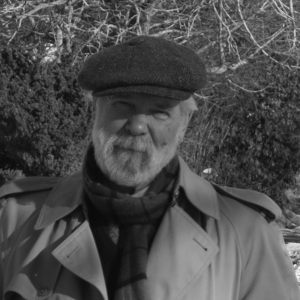The Importance of Urban Design and Architecture
To get ready for the big event, TEDxRVA, BOOMER decided to catch up with Robert Russell, an architectural historian with a lot to say about urban design.

To get ready for the big event, TEDxRVA, BOOMER decided to catch up with Robert Russell, an architectural historian with a lot to say about urban design. Here’s what he had to say:
Robert Russell, architectural historian
1.) Why should the average person care about architecture?
 “Because architecture is the most public of all the arts. You can eliminate painting from your life by avoiding museums and galleries. You can skip sculpture the same way – and by not driving down Monument Ave. But no matter how hard you try, you are stuck with buildings. They are all around us. We walk by them, we go into them all day long, we walk out of them in the morning. And they have an effect on us. The evidence is mounting that we are hard-wired to respond to the kind of effects buildings have on us: spatial relationships and scale. If those relationships and scale are bad, we feel it, even if we can’t articulate it. ‘That’s a creepy building’ is probably more than simply a subjective response.
“Because architecture is the most public of all the arts. You can eliminate painting from your life by avoiding museums and galleries. You can skip sculpture the same way – and by not driving down Monument Ave. But no matter how hard you try, you are stuck with buildings. They are all around us. We walk by them, we go into them all day long, we walk out of them in the morning. And they have an effect on us. The evidence is mounting that we are hard-wired to respond to the kind of effects buildings have on us: spatial relationships and scale. If those relationships and scale are bad, we feel it, even if we can’t articulate it. ‘That’s a creepy building’ is probably more than simply a subjective response.
Another reason to care about architecture is that there is so much bad architecture out there that we need to call it out. Architects and architecture schools are completely complicit in this, by the way, and we cannot turn to them for help. They have mostly gone over to the ‘Dark Side’ and are contemptuous of the non-architectural public. When some dreadfully ridiculous building is going up, people need to ridicule it. This is not cruel, since ridicule is the natural human response to the ridiculous.”
2.) What are some steps that architects can take to make buildings work with the cities they are in?
“This is a tough one. Despite all the big talk architects so frequently indulge in, the truth is they are captive to outside forces most of the time. Unlike almost all other visual artists, architects do not design or create for themselves. They work for clients who have budgets. And architects are almost universally known as the budget-busters. In my experience, clients are frequently the weak link in a project. They do not really know what it is they want, and they are easily swayed by an architect, but then budget limitations get in the way and the architect is willing to sacrifice almost any amount of practical stuff in order to preserve the one big thing he has persuaded the client to go for. So you end up with an unconvincing building, with cheap finishes, that doesn’t work.
One thing that architects and their clients CAN do, but rarely choose to do, is to recognize and acknowledge that almost all architecture is what is known as “background buildings.” These are buildings that are not meant to stand out. They do their job, they don’t degrade the street they are on, and they don’t particularly call attention to themselves. But they can, in a quiet sort of way, add to the quality of what is often called “the public realm.” Architecture schools do not teach their students to design these kinds of buildings though.
Another thing they can do is actually pay attention to the place where they are working. This is not to say that architects can only design in their hometowns, but if a place still has fragments of its past surviving – if there is a “there” there – then it could be the job of the architect to find those fragments and try to understand them so she can emulate or reinterpret them in a new building. One of the reasons that so many places are interchangeable these days is that their buildings all look like they came from the same catalogs.”
3.) Without giving away any spoilers, what can people expect from your talk at TEDxRVA 2016?
“I appreciate the opportunity to go off about buildings, especially since the TED talk in April will not be about architecture at all! One of the things I have come to realize after a few decades of teaching about architecture is that urban design trumps architecture every time. Now, I’m not talking about that architectural favorite: the Object Building (you can always tell these because that’s all the picture shows you – the building). But if you look carefully at postcard views of cities, especially the iconic ones, you will see that the architecture is frequently (and being polite) second-rate. 90 out of 100 postcards of Charleston show the view of the High Battery with its famous row of houses. Those houses are, individually, not particularly good, but as an ensemble they really work. Bath, in England, is rightly famous for its streets and squares, but if you look closely at the buildings that line those streets and squares, they are frequently pretty awful. In fact, the short street leading to the Royal Crescent is one of the ugliest streets I have ever seen, architecturally speaking, but I am firmly convinced that John Wood designed it that way to make the contrast at the end of the street that much more memorable. Which it is.
Good urban design makes second-rate buildings look almost first-rate. Good architecture cannot make a second-rate cityscape look any better. I will be talking about things that can improve cityscapes.”
You can see Robert Russell live at TEDxRVA on Friday, April 8 from 9 a.m. to 5 p.m. at the Carpenter Theatre at Dominion Arts Center. Get your tickets here.
TEDxRVA, now in its fourth year, will feature a central theme, and like themes of the past, this year’s is elegant in its simplicity: ARTFUL. ARTFUL is a way of perceiving, a way of doing, an effect. Through being ARTFUL we are led by passion; we contribute value and bring about a healthier, more fulfilled society.


